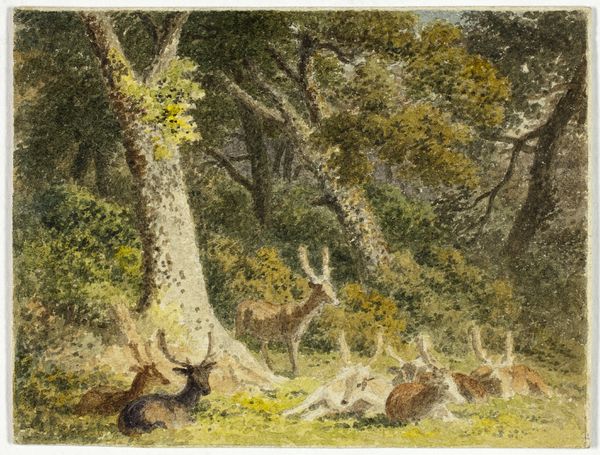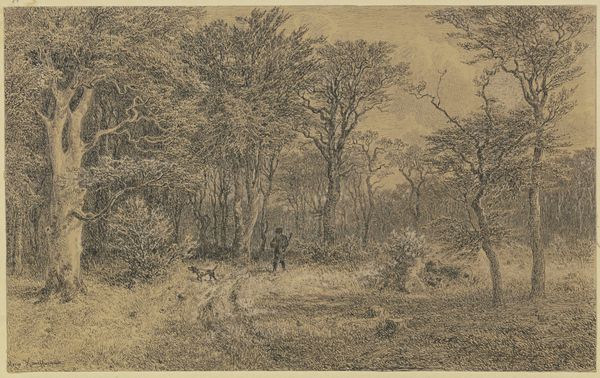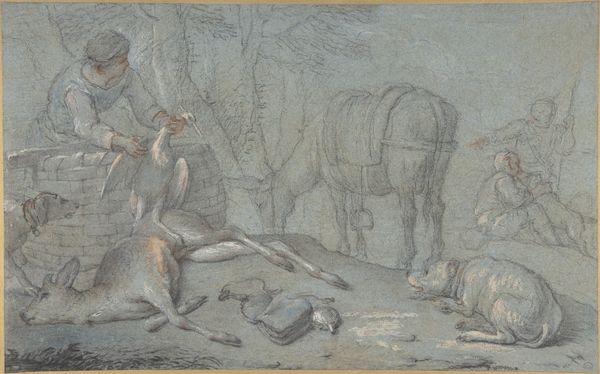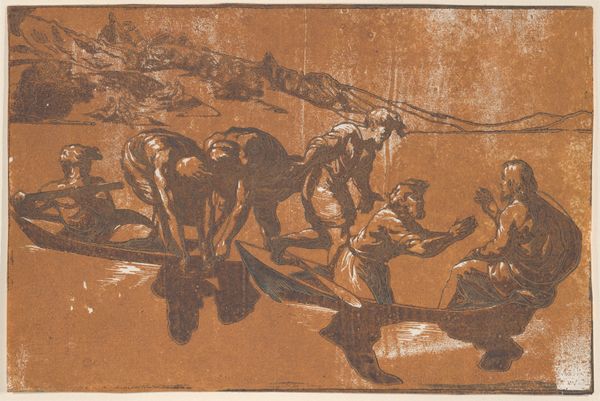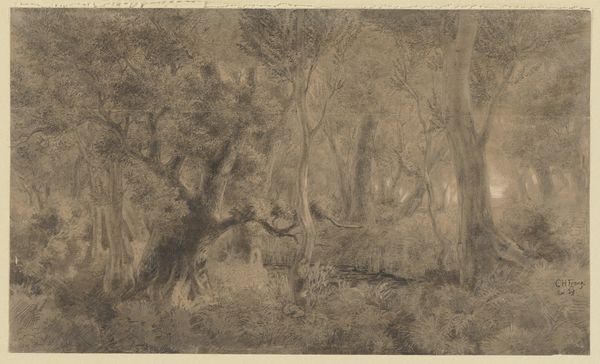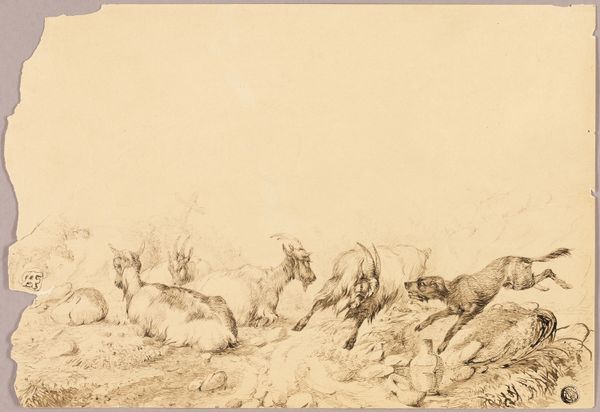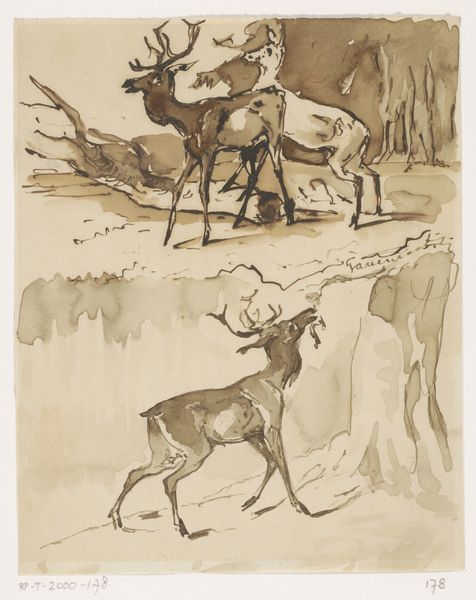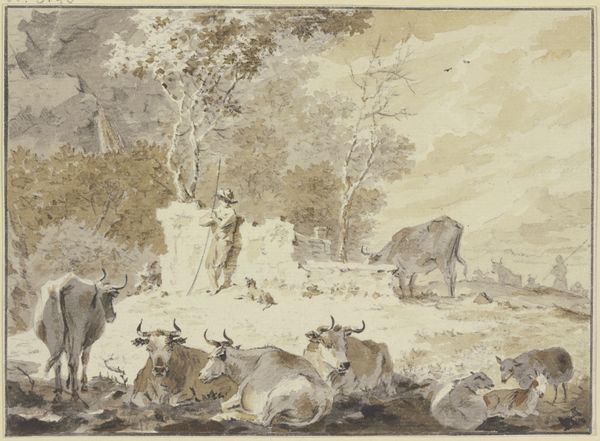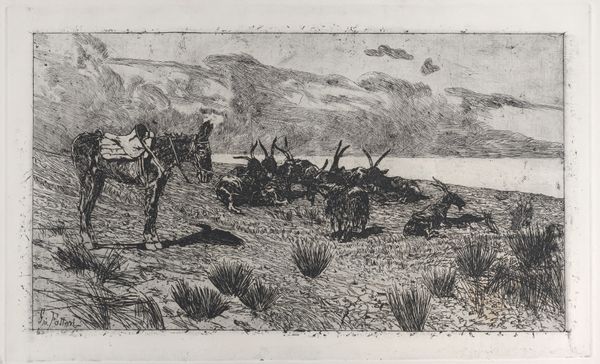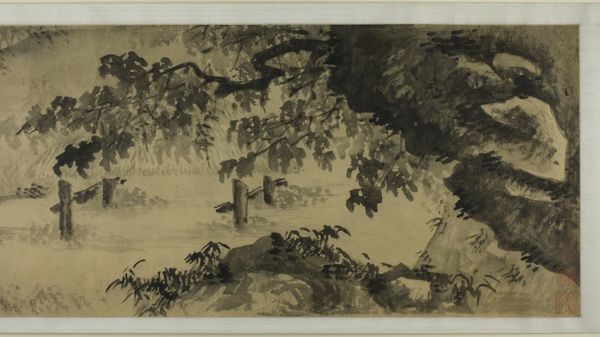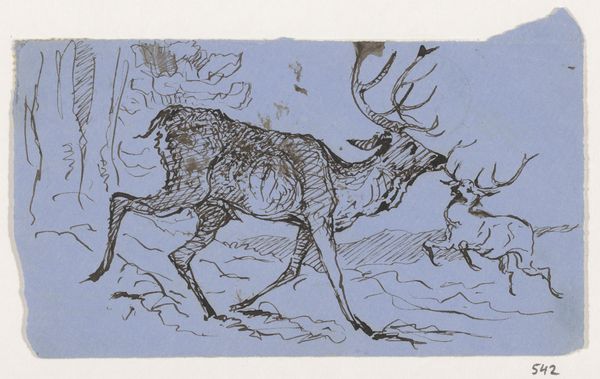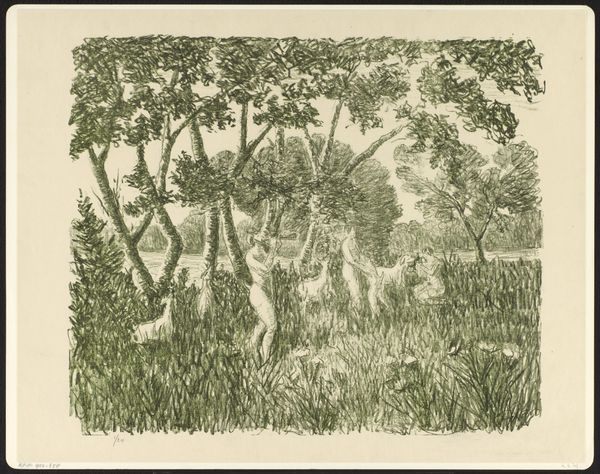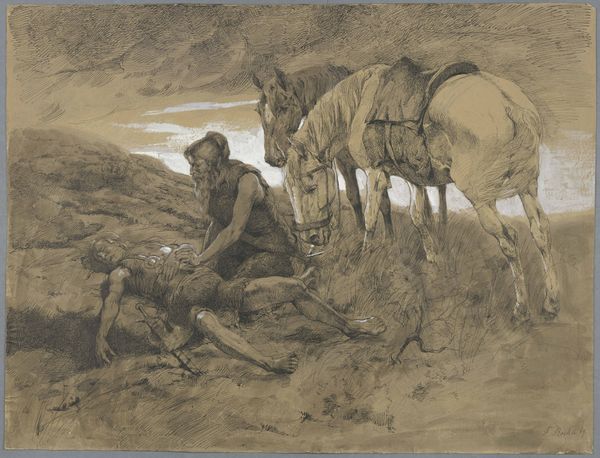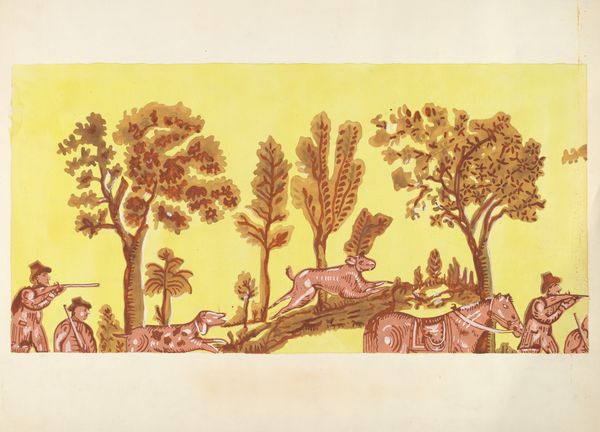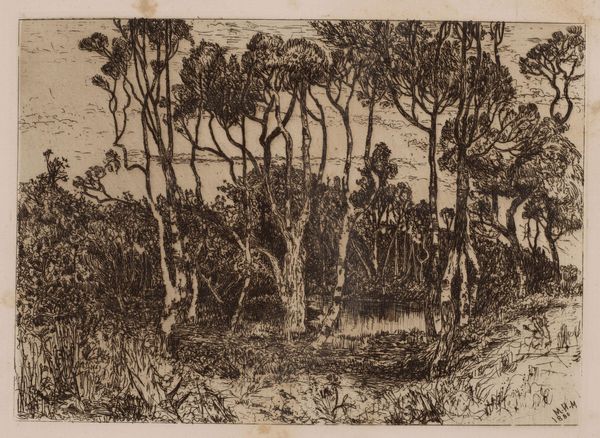
Dimensions: 225 mm (height) x 358 mm (width) (bladmaal)
Curator: Today we’re looking at a drawing titled "Poacher with Dog in the Woods," created by Hans Smidth between 1839 and 1917. It's rendered in ink, showcasing the artist's skill in capturing a moment of rural life. Editor: There’s an unsettling stillness to this piece. The subdued palette and the way the foliage is depicted make the poacher’s presence feel both intrusive and secretive. There’s a tension in the composition, heightened by the dark washes. Curator: Yes, Smidth was known for his genre paintings and depictions of rural life, often highlighting the societal dynamics at play. The act of poaching itself carried complex implications, touching upon land ownership, social class, and the very definition of 'crime' in the context of rural communities. Editor: Notice the stark contrast between the densely rendered forest and the relative lightness of the open spaces. The dog, seemingly on alert, forms a dynamic line leading the eye directly to the figure. This line creates movement and adds tension. The contrast invites a reading beyond just a straightforward depiction of a hunting scene. Curator: Absolutely, and we can also consider how Romanticism influenced depictions of nature during this period. The forest isn’t merely a backdrop but a character itself. The figure blends in a sort of camouflage within the wooded environment, further pointing out a dynamic and possibly antagonistic relationship with it, while perhaps reflecting larger cultural anxieties about nature, property and class divisions. Editor: The way Smidth uses cross-hatching and shading gives the trees and undergrowth an almost palpable texture. You can almost feel the dampness of the forest floor and hear the rustle of the leaves. There’s great attention to light and shadow creating this effect and suggesting space. Curator: Indeed, Smidth uses the landscape to amplify the narrative. Considering poaching was often a desperate act driven by poverty, we can view the forest not only as a space of refuge but also a site of resistance against prevailing social structures and strict land usage regulations. Editor: Looking at the marks here makes me really value the simplicity of the ink, though. You could almost reduce this image down to shape alone; light and shadow work together to imply depth, not describe it directly, leaving a strong impression. Curator: It's fascinating to see how a seemingly simple genre scene can offer insights into the complexities of rural life and broader social concerns during that era. Editor: I agree. It's also fascinating how much Smidth achieves by focusing attention on materiality and tone in this relatively understated work.
Comments
No comments
Be the first to comment and join the conversation on the ultimate creative platform.
